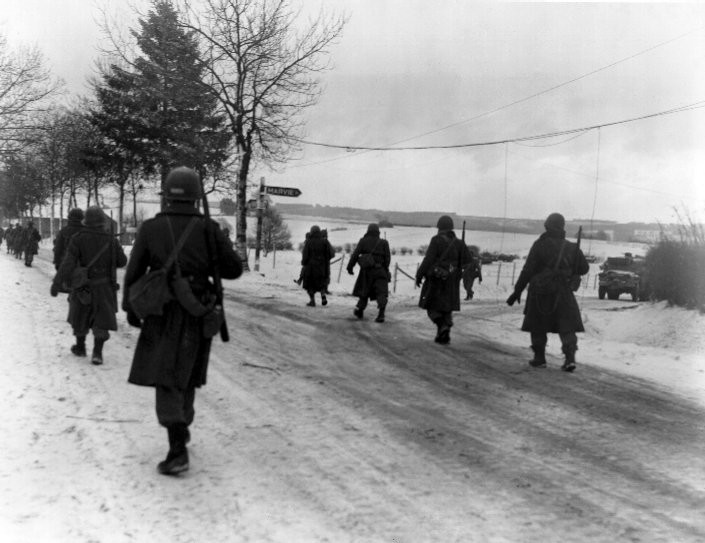In September 1944 the allied forces had reached the line from Luxembourg to Antwerp. Then Hitler decided to start a last counteroffensive in the Ardennes. He had to wait for bad weather conditions, with clouds and fog, to prevent the Allies from using their superior air force. Finally, the battle was launched on 16 December 1944 and the 6th Panzer SS Army, the 5th Armored Army and the Brandenberger’s 7th Army marched into the Ardennes. With this operation, codenamed Wacht am Rhein, Hitler wanted to split the allied armies by a surprise counteroffensive. He wanted to seize the bridges over the Meuse River in order to advance further via Liège to the port of Antwerp.
The American side was completely surprised, but unlike the offensive campaign in May 1940, the Ardennes Offensive was no quick success. The weather conditions were worse, the allied air force was much more powerful and the German fuel supplies went short. By 23 December the weather started to clear. The Americans brought their air power into force and started a counterattack.
By mid-January 1945 a lack of fuel forced the Germans to simply abandon their vehicles, which was fatal to Hitler’s ambition. On 25 January 1945 the battle was over. The Battle of the Bulge was the costliest operation ever fought by the U.S. Army; 10,733 American soldiers were killed and 42,316 wounded. German losses totalled 12,652 killed and 38,600 wounded. About 2,500 civilians lost their lives in Belgium and 500 in the Grand Duchy of Luxembourg.
